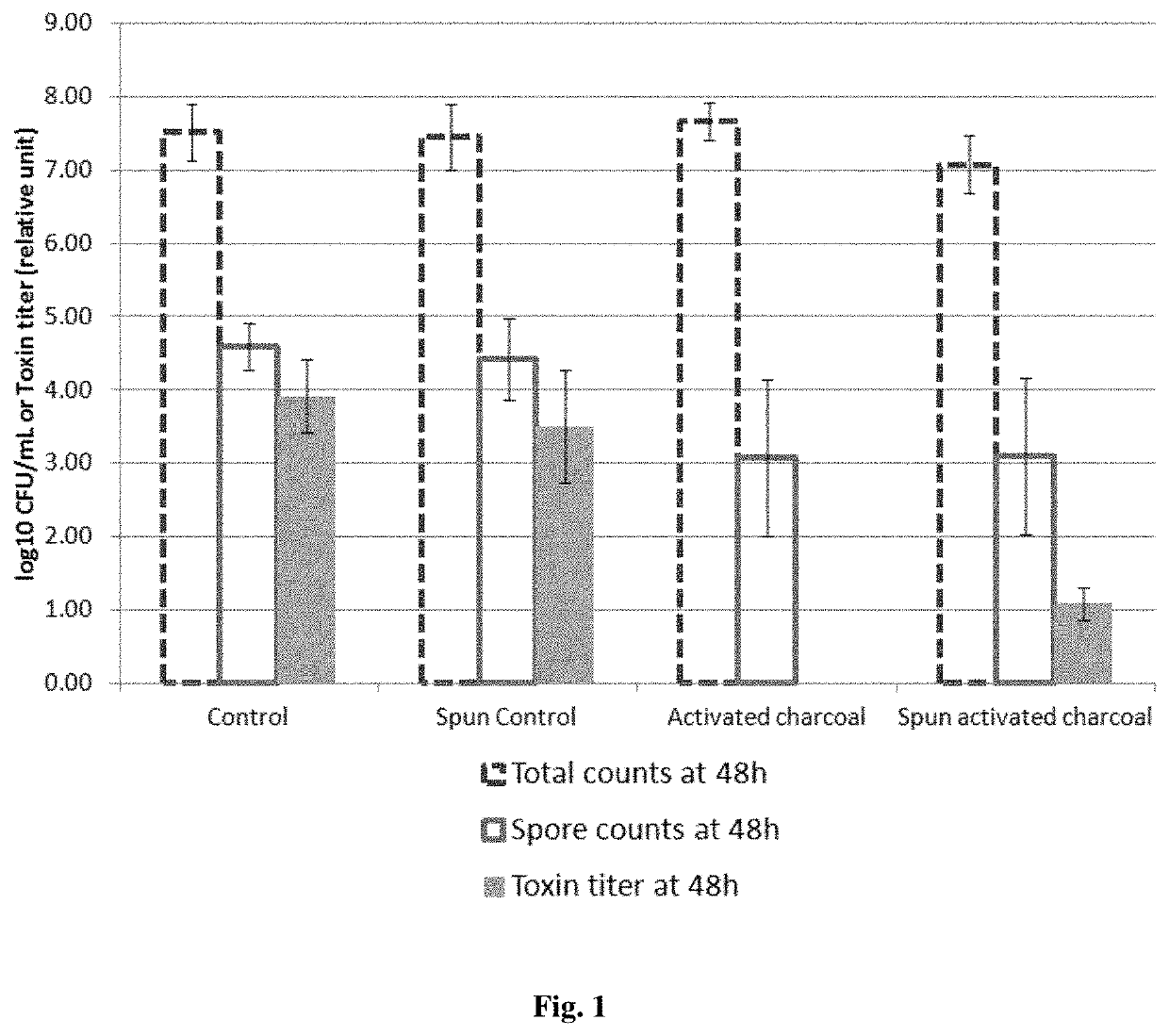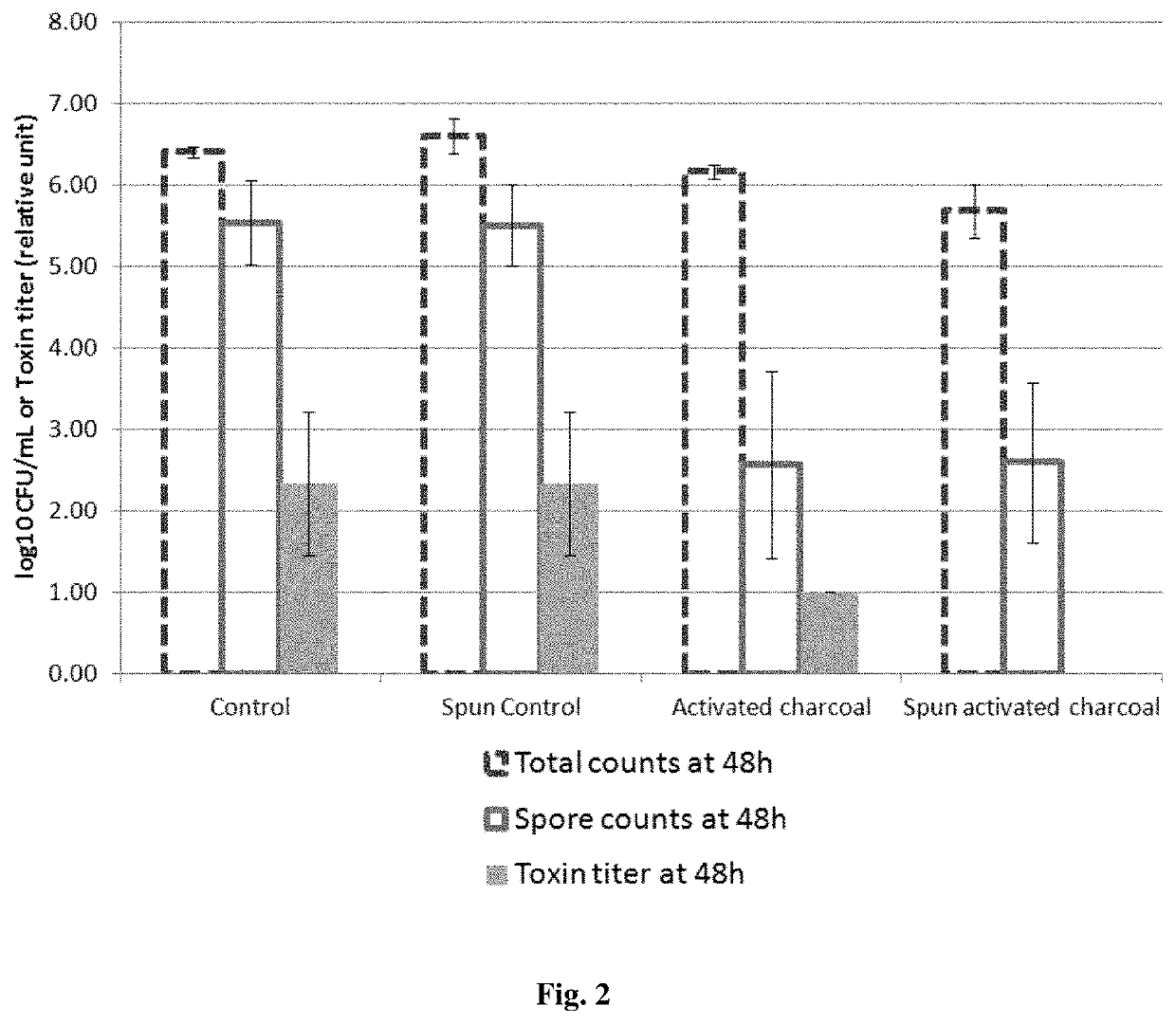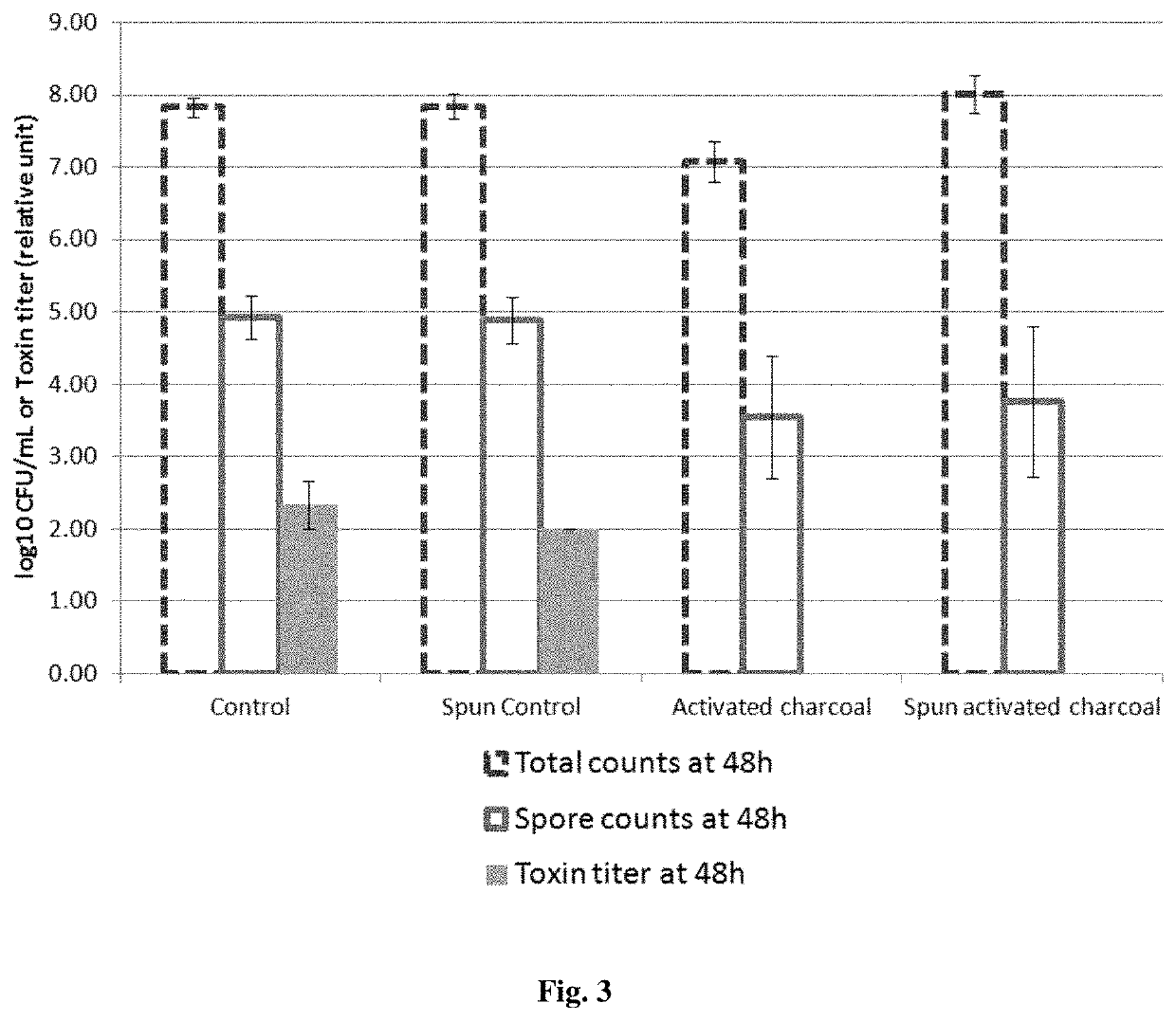Suppression or reduction of the pathogenicity or virulence of a clostridium bacteria
a technology of clostridium bacteria and pathogenicity, applied in the field of suppression or reduction of the pathogenicity or can solve the problems of frequent recurrence of the disease, high mortality rate (up to 60%), and challenge, and achieve the effect of neutralizing reducing the pathogenicity of clostridium bacteria, and effectively altering the virulence of clostridium bacteria
- Summary
- Abstract
- Description
- Claims
- Application Information
AI Technical Summary
Benefits of technology
Problems solved by technology
Method used
Image
Examples
example 1
Activated Charcoal Delays and Suppresses the Sporulation and Production of Toxins by C. difficile in BHI Broth
[0105]5 mL of BHI (Brain Heart Infusion) broth is incubated with or without activated charcoal (a pharmaceutical grade activated charcoal of vegetal origin at the concentration of 0.05 g / mL) for 2 hours, whereas 5 mL of BHI broth is incubated for 2 hours without the activated charcoal formulation. A half of each sample is centrifuged and filtered with 0.22 μm filters whereas the other half is not centrifuged and filtered. The centrifugation / filtration with 0.22 μm filters removes the activated charcoal in the samples incubated with activated charcoal.
[0106]The table below summarizes the 4 conditions:
Centrifugation / NoBHI brothfiltration withcentrifugation / submitted to:0.22 μm filtersfiltration2 hours incubationSpun activatedActivatedwith activatedcharcoalcharcoalcharcoalNo contactSpun controlControlwith activatedcharcoal[0107]In the “Control” group, the culture BHI broth has ...
example 2
Activated Charcoal Delays and Suppresses the Sporulation and Production of Toxins by C. difficile in Fecal Slurry Broth
[0119]A 10% slurry of pooled faeces from healthy donors is made in pre-reduced gut model broth as described in Freeman, J., O'Neill, F. J., and Wilcox, M. H. Effects of cefotaxime and desacetylcefotaxime upon Clostridium difficile proliferation and toxin production in a triple-stage chemostat model of the human gut. Journal of Antimicrobial Chemotherapy 2003; 52: 96-102.
[0120]5 mL of this fecal slurry broth is incubated with or without activated charcoal (a pharmaceutical grade activated charcoal of vegetal origin at the concentration of 0.05 g / mL) for 2 hours. Half of each sample is centrifuged and filtered with 0.22 μm filters whereas the other half is not centrifuged and filtered. The centrifugation / filtration with 0.22 μm filters removes the activated charcoal in the samples incubated with activated charcoal.
[0121]The table below summarizes the 4 conditions:
Cent...
example 3
Activated Charcoal Delays or Suppresses the Sporulation and Production of Toxins by C. difficile in Gut Model Broth
[0129]5 mL of pre-reduced gut model broth (GM broth) (Freeman, J., O'Neill, F. J., and Wilcox, M. H. Effects of cefotaxime and desacetylcefotaxime upon Clostridium difficile proliferation and toxin production in a triple-stage chemostat model of the human gut. Journal of Antimicrobial Chemotherapy 2003; 52: 96-102.) is incubated with or without activated charcoal (a pharmaceutical grade activated charcoal of vegetal origin at the concentration of 0.05 g / mL) for 2 hours. Half of each sample is centrifuged and filtered with 0.22 μm filters whereas the other half is not centrifuged and filtered. The centrifugation / filtration with 0.22 μm filters removes the activated charcoal in the samples incubated with activated charcoal.
[0130]The table below summarizes the 4 conditions:
Centrifugation / NoGut model brothfiltration withcentrifugation / submitted to:0.22 μm filtersfiltration2...
PUM
| Property | Measurement | Unit |
|---|---|---|
| specific surface area | aaaaa | aaaaa |
| wet particle size | aaaaa | aaaaa |
| wet particle size | aaaaa | aaaaa |
Abstract
Description
Claims
Application Information
 Login to View More
Login to View More - R&D
- Intellectual Property
- Life Sciences
- Materials
- Tech Scout
- Unparalleled Data Quality
- Higher Quality Content
- 60% Fewer Hallucinations
Browse by: Latest US Patents, China's latest patents, Technical Efficacy Thesaurus, Application Domain, Technology Topic, Popular Technical Reports.
© 2025 PatSnap. All rights reserved.Legal|Privacy policy|Modern Slavery Act Transparency Statement|Sitemap|About US| Contact US: help@patsnap.com



